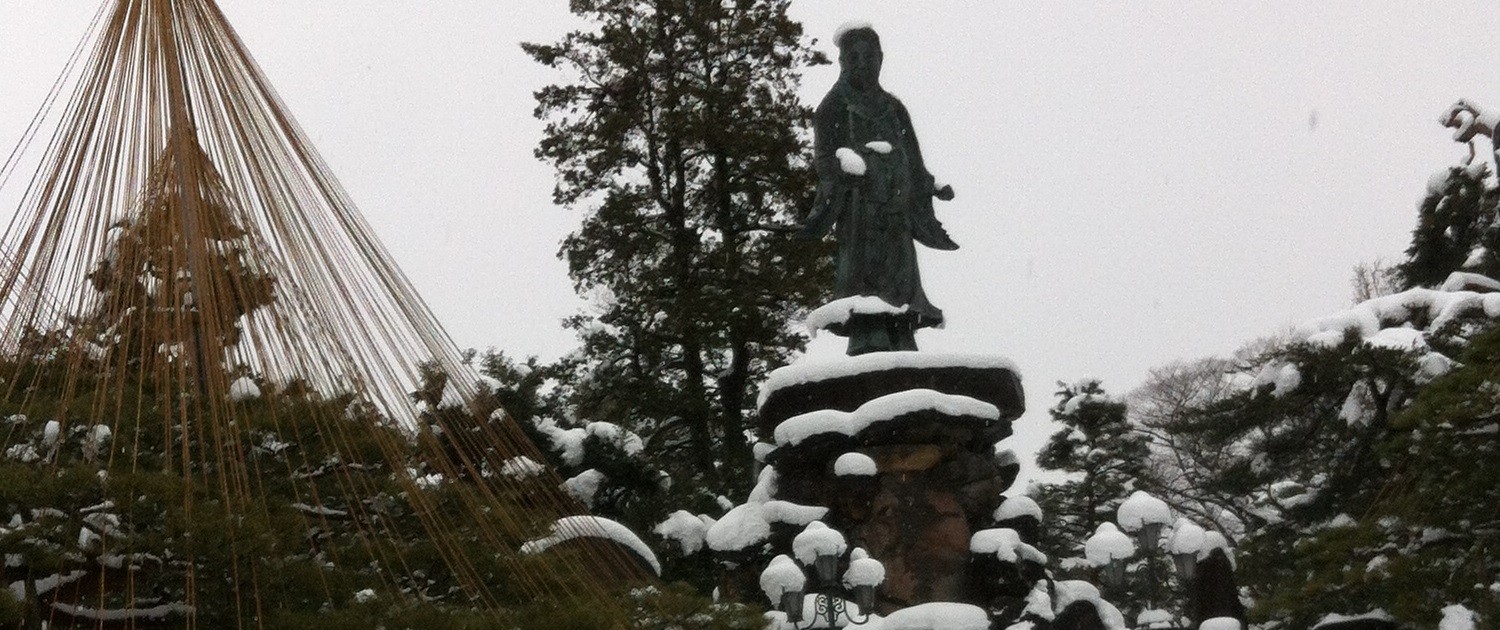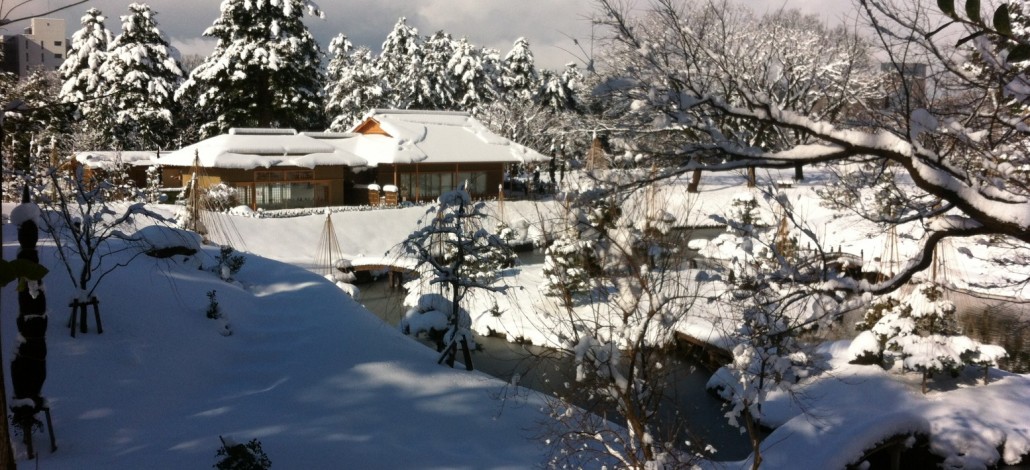Coming face-to-face with snow-covered warriors
On the morning of Jan. 3, I found myself in the heart of Kanazawa City doing a sort of hop-skip on the snow, trying to keep my boots from sinking in too deep. Kanazawa is known for being a treasure chest of relics dating back to Edo period Japan, when it was part of a fief held by the fabulously wealthy Maeda Daimyo.
One of these relics is Kanazawa Castle, which was towering above me, occasional snowfalls hurtling down from its rafters to land with a thud on the frozen moat below. I bought two tickets — one for me, the other my friend — from the smiling lady at the counter and headed in through the open doors.
Inside, the wooden walls and floors were well-kept and gleaming with polish. It would be impossible to believe, even for a second, that Kanazawa Castle stands today as it did in 1583, the year it was first established by the Maeda. Indeed, it has been destroyed and rebuilt numerous time, hapless victim to the ravages of time, invasions, fires, and earthquakes. Most of what is available to present-day visitors was constructed in 2001, and all around the exhibition halls were signs and placards identifying various features of the architecture, including what it was used for and how it was reconstructed. I paused my restless pacing to gaze, fascinated, down a row of narrow slits in the floor, which were used back in the day to hurl rocks at invading samurai.
I climbed up the turret, which opened out onto a wide view of the castle grounds. I looked at the trees, the ponds, the neighboring buildings, squinting slightly because the early noon sun reflected off the snow in piercing needles of light. In the distance, the apartment buildings and business district of the modern half of Kanazawa could be seen. I wondered how it would have felt to stand here in the seventeenth century, with the tiny toy houses in the distance changed into an invading army. I smile a bit to myself and turn to descend.
In the afternoon, I took a walk around Kenroku-en, arguably the number one attraction of Kanazawa. It used to be a private garden for the sole enjoyment of the Maeda, but now it is a public park, accessible to the masses for under five dollars. (In celebration of New Year’s, it was offering free admission, so I was able to waltz in without so much as pulling a cent out of my pocket.)
Small forests, streams, and waterfalls flowed in and out of the landscape, and I paused on a bridge, staring down at the water, which I knew would be full of koi fish once summer rolled around again. Continuing through a grove, wincing and ducking under my umbrella whenever a crow perched on branches dripping with snow, I came out onto the main pond. Beside it a stone lantern was perched gracefully on two legs — Kotoji Toro, the prized symbol of both Kenroku-en and Kanazawa. Behind me, a spray of water wobbled slightly as it bravely reached for the sky — built in 1861, it is said to be the oldest fountain in Japan.
My favorite part of the garden, however, is a great statue, turned green with age, that stakes its claim on a throne of rocks. The giant metal face, however, is not that of one of the Maeda leaders (as I once mistakenly believed) but of Yamato Takeru, a legendary prince whose story is told in the two oldest chronicles of Japan, the Kojiki (712) and the Nihon-Shoki (720) — both of which are more myth than history. He is said to have been a fierce warrior, so brutal that he slew his older brother when the latter failed to come down to dinner. His father, the emperor Keikō, fearing the terrible power of his son, sent him from the castle, ostensibly to conquer the warrior tribes scattered throughout the land. He has since become an important symbol, carved from Japan’s mythic past of gods, beasts and warriors.
That day, I gazed up at him, smiling a little at the round cap of snow perched on top of his head. Whether he was real or not, to me, he remains an important historical figure — a cruel but awesome ideal from long ago. I gazed at the pond frosted with white, the bent grandmothers and grandfathers taking their afternoon stroll around the peaceful grounds of the garden) and couldn’t help but think that though Japan has drifted a long way from its belligerent samurai days, it still sets my imagination running when I find, buried under layers of soft, fresh-fallen snow, the strong features of Prince Yamato Takeru.


